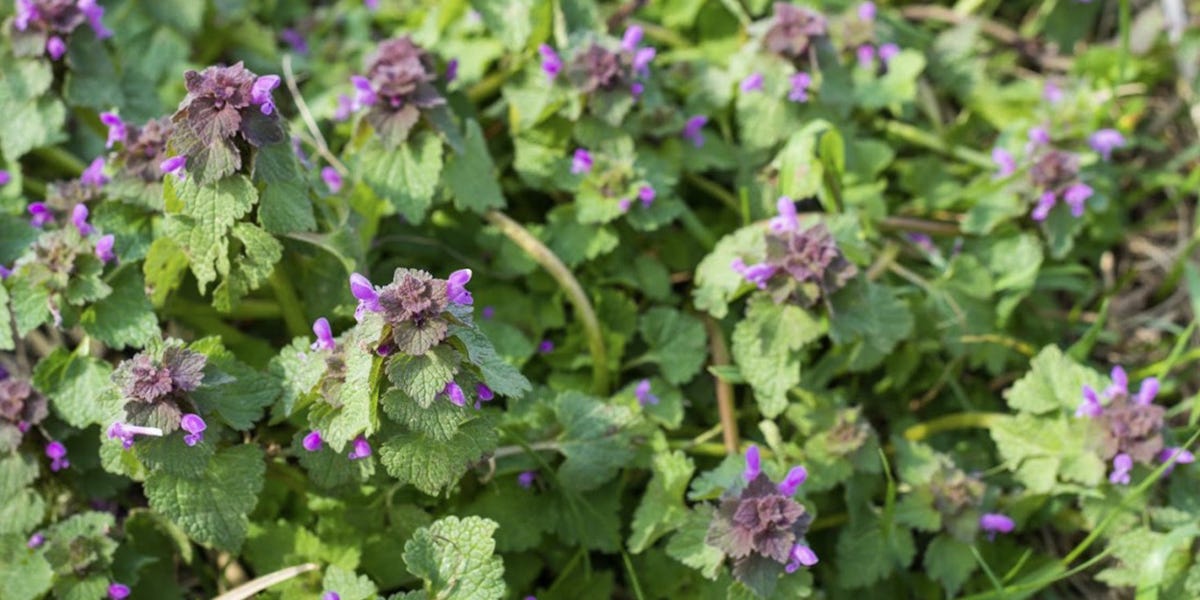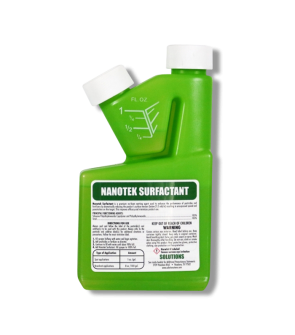Gain access to personalized product screening, the best pricing, rewards, and more!
Most Effective Products
How To Get Rid Of Creeping Charlie Without Chemicals
This page is an expert guide on eliminating Creeping Charlie from your property using the products and methods suggested by our experienced lawn care specialists. Follow this guide and use the recommended products, and we guarantee you will be successful.
Creeping Charlie is a common weed that plagues residential turf, particularly in moist areas with considerable shade. However, it can also thrive in sunlight and spread to other parts of the yard, ruining the uniformity you may be going for.
Creeping Charlie is known for its kidney-shaped leaves, which are bright green and shiny. They are often a sign of too much shade in your lawn, overly wet soil, or poor fertilizing.
If you are dealing with Creeping Charlie on your property, follow this guide to learn how to get rid of the weed before it starts to take over. While on this page, we will provide natural remedies for those who wish not to use chemicals, if the weed is firmly established and has spread to the point where it is hard to control, chemical control may be your only option.
Identification

Before carrying out a treatment program, you will need first to be certain that you are dealing with Creeping Charlie and not some other weed. Careless identification can lead to using the wrong treatment methods, which can waste time and money.
- Creeping Charlie is an herb known by many names, such as ground ivy and cat’s foot. It was used for medicinal purposes to treat diseases like scurvy, as an astringent anti-allergy, and many other ailments.
- Creeping Charlie has fibrous roots and flowered stems. The flowered Creeping Charlie has small leaves and consists of small oval-shaped nutlets. It has purple flowers and creeps or spreads like a carpet on the ground and connects from nodes to nodes that form roots, making it difficult to get rid of them.
Use the above description and image to help you properly identify Creeping Charlie. If you are unsure whether the weed you are seeing is Creeping Charlie or something else, you can always contact us. Our lawn care experts will help you identify your weed growth and suggest treatment options.
Inspection

After you have confirmed that you are dealing with Creeping Charlie, you can move on to inspection. During this phase, you will locate areas where Creeping Charlie is thriving and observe the conditions that allow it to thrive. This information will help you know where to focus your herbicide application.
Where to Inspect
Creeping Charlie is a weed that grows in shady and moist areas. It can easily spread anywhere through seed, the nodes of its roots, etc., so it is not easy to eradicate. Look for overly shady areas of your yard to find where the weed is established.
What To Look For
Creeping Charlie grows low to the ground and is known to create thick mats where it is established, making it stand out on a lawn. It would be best if you also took note of its tiny purplish-blue flowers that bloom from the plant.
Treatment
While this guide is for getting rid of Creeping Charlie without the use of chemicals (which is covered under "prevention"), in cases where the infestation is significant, you may have no choice but to use an herbicide to help eliminate the weed.
When applying herbicides, be sure to wear protective clothing or safety equipment that completely covers your arms and legs, as well as gloves, socks, and shoes. To get rid of Creeping Charlie, we suggest using a selective herbicide that contains dicamba, such as 2 4-D Amine. This product is an economical option and effective against many different broadleaf weeds while leaving desired grass types unharmed.
Step 1: Mix and Apply 2,4-D
 Measure the square footage of the treatment area to determine how much 2,4-D you will need. Find the square footage by measuring the treatment areas' length and width in feet, then multiply them together (length X width = square footage).
Measure the square footage of the treatment area to determine how much 2,4-D you will need. Find the square footage by measuring the treatment areas' length and width in feet, then multiply them together (length X width = square footage).
2,4-D Amine should be mixed with a gallon of water at the rate of 0.75 to 1 fl. oz. (1-1/2 to 2 Tablespoons) per 1,000 square feet. Mixing 2 4-D with a surfactant like Nanotek Surfactant (at a rate of 1 fl. oz. per gallon of spray solution) will help the product stick better to the weed and make the herbicide work more effectively.
For example, if you have a 2,000 sq. ft. area to treat, you must mix 1.5 to 2 fl. oz. in 2 gallons of water.
Once you have made your measurements and calculated how much 2,4-D you need, mix the product and surfactant with the appropriate amount of water in a handheld or backpack sprayer. Shake the sprayer to ensure the solution is well-mixed, and then you're ready to spray.
Creeping Charlie frequently grows in shady areas near trees or shrubs. In these areas, we recommend spraying only to wet the leaves of the ground ivy and not to soak the ground to avoid the herbicide's uptake by the roots of the woody plants. Any woody or broad-leaf plant that comes into contact with an herbicide may be damaged or killed.
Step 2: Reapply As Needed
If a second application is needed, apply the herbicide in spot treatments. Repeated applications of 2,4-D should be spaced according to the label directions (normally every 7 to 10 days). Be careful applying in the heat, and just spot-treat the area so you don't burn your grass.
Prevention
When the Creeping Charlie infestation is minimal or manageable, you may not need chemicals to remove the weed. Here are some non-chemical remedies to prevent a Creeping Charlie invasion from worsening.
- Choking the Creeping Charlie out with newspapers, cardboard, or a tarp. One non-chemical method to eliminate Creeping Charlie is smothering the infestation and blocking all sunlight from contacting the weed with the help of newspapers. Collect a large amount of sheets of newspapers and place at least 10 layers of newspapers over the creeping Charlie, making sure they overlap each other. Continue stacking the newspaper in rows until the entire target area is covered. They spray some water to make the weed surface start to rot. Do this for at least a week, and the Creeping Charlie should die out.
- Pulling out the weeds. Wear gloves, have appropriate tools to handle creeping Charlie, and start pulling out every weed you find. This will be difficult as the roots or nodes left behind will allow the ground ivy to grow back. You will have to be vigilant and constantly alert to pull out the sprouts of the Creeping Charlie. Use a hand cultivator tool to pull the weeds and roots out of the soil to pick out the remains of the Creeping Charlie, then cover the soil with 2 inches of wood mulch. This will suffocate the ground ivy and eradicate the creeping Charlie.
- Sunbathing for the Creeping Charlie. The Creeping Charlie grows in shady and moist areas, so ensure your garden is as dry as possible. It should have a good drainage system to seep out the extra water from the soil. Trim the trees, branches, grass, and shrubs. Expose the garden to more sunlight. The ground ivy will slowly wither out as it is incompatible with sunlight and dry areas.
- Better Lawn Maintenance. The growth of Creeping Charlie is usually a sign of poor upkeep of the lawn. Make sure to fertilize the soil properly and landscape the plants and trees in a way that gets more sunlight. Look for bare spots in your yard and garden and put mulch over it or seed the area. Aerate the soil for proper air circulation, allowing the soil to get oxygen and keep the soil dry at an acceptable level. Use a bagging lawnmower to mow areas covered with Creeping Charlie to hold all the roots and nodes that may allow the weeds to grow back.
Key Takeaways
What is Creeping Charlie?
- Creeping Charlie is an invasive weed that creates thick mats on landscapes and enjoys growing in areas with high moisture and shade.
How To Get Rid of Creeping Charlie
- Our top recommendation for treating Creeping Charlie is a selective herbicide such as 2 4-D Amine. This product is selective and will not harm desired grasses, only the Creeping Charlie.
- Organically, removing Creeping Charlie is best done via hand pulling or cultural methods of consistent fertilization, air circulation, watering, and sunlight. This method is best when Creeping Charlie's growth is minimal.
Preventing Creeping Charlie Reemergence
- Prevent Creeping Charlie by improving lawn practices and using natural means of prevention, such as exposing your yard to more sunlight and smothering or hand-pulling weed growths.










